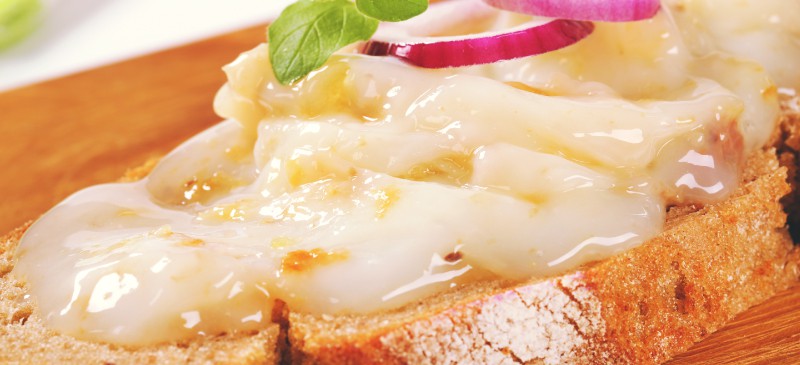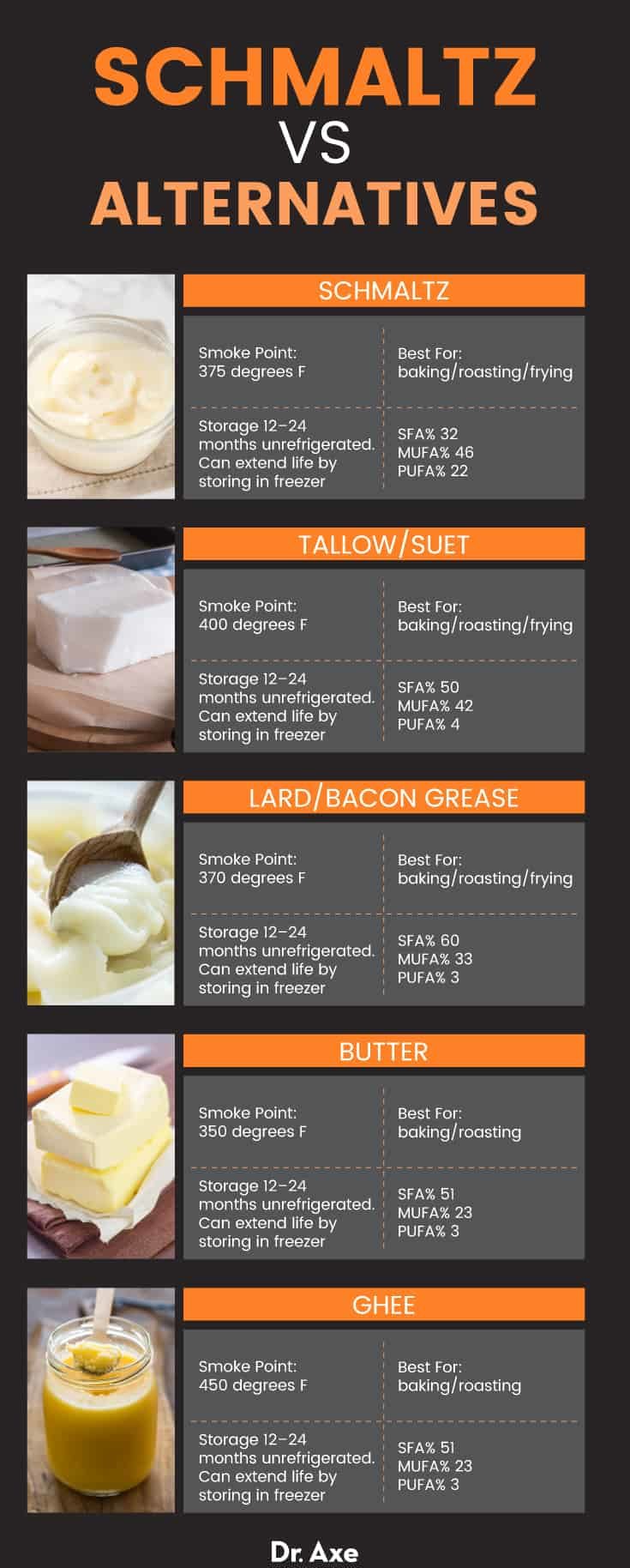This Dr. Axe content is medically reviewed or fact checked to ensure factually accurate information.
With strict editorial sourcing guidelines, we only link to academic research institutions, reputable media sites and, when research is available, medically peer-reviewed studies. Note that the numbers in parentheses (1, 2, etc.) are clickable links to these studies.
The information in our articles is NOT intended to replace a one-on-one relationship with a qualified health care professional and is not intended as medical advice.
This article is based on scientific evidence, written by experts and fact checked by our trained editorial staff. Note that the numbers in parentheses (1, 2, etc.) are clickable links to medically peer-reviewed studies.
Our team includes licensed nutritionists and dietitians, certified health education specialists, as well as certified strength and conditioning specialists, personal trainers and corrective exercise specialists. Our team aims to be not only thorough with its research, but also objective and unbiased.
The information in our articles is NOT intended to replace a one-on-one relationship with a qualified health care professional and is not intended as medical advice.
Is Schmaltz Good for You? Pros & Cons of Schmaltz
September 24, 2018

What if I told you you couldn’t use butter to cook with or as a spread — where would you turn? Schmaltz, a common ingredient in Jewish and Central Europe cuisine, just may be what you’re looking for.
Schmaltz is rendered chicken or goose fat that’s used in cooking or as a spread, and similar to the benefits of chicken collagen, it’s been shown to potentially benefit skin, hair, nails and even cholesterol levels. Of course, if you’re vegetarian, it may not be for you, and schmaltz does have some downsides.
Wondering if it might be for you? Let’s take a look at what schmaltz is all about.
What Is Schmaltz?
Schmaltz is chicken fat or goose fat that is simmered on the stove and rendered down into a lard-like substance. Unlike bone broth that remains as a soup-like consistency, schmaltz becomes almost buttery, making it quite a flavor-packed option that chefs love. It is known as a spread on fresh baked breads in Europe and in the United States, and it’s commonly associated with Jewish cuisine, simply referenced as poultry fat. Chicken schmaltz is most common in the Jewish community since Jewish practice forbids frying food in butter or lard.
Schmaltz is made by using the fatty tissues of poultry and melting it so the drippings can be collected. It can also be made through a dry process, cooking the fatty tissues under low heat and slowly collecting the fat or by using a wet-steam process that melts the fat with a direct steam injection. With all processes, the schmaltz is filtered and clarified, yielding its lard-like or buttery-like consistency.
As noted above, homemade schmaltz is popular among the Jewish community, made by melting small pieces of chicken or goose fat in a pan over low to medium with onions. The melted fat is strained through a cheesecloth. It is also common to collect schmaltz by chilling homemade soup that contains the chicken or goose fat. Once it is chilled, the fat floats to the top and can be skimmed and collected.
Is Schmaltz Good for You?
There are pros and cons to rendered goose or chicken fat. The top benefits of schmaltz include:
- May help cholesterol levels
- Good for high-temperature cooking
- Fits on the keto diet
- Benfits skin, hair & nails
As for the downsides, it could potentially increase the risk of heart issues given that it is made from animal fat, and of course, it isn’t for the vegetarians and vegans out there. Let’s take a further look at the pros and cons.
Pro: May Help Cholesterol Levels
The same monounsaturated fats that are found in lard are also found in schmaltz. (1) There are many benefits to monounsaturated fats, and one such benefit is its ability to help balance cholesterol levels.
Research from Penn State University published in the American Journal of Clinical Nutrition found that diets high in monounsaturated fats “do not raise triacylglycerol or lower HDL cholesterol” but do lower bad LDL cholesterol. (2)
Pro: Good for High-Temperature Cooking
Not only does schmaltz offer some amazing flavor benefits, but because it can tolerate high cooking temperatures, this makes it a chef’s dream for high-temperature cooking recipes. Additionally, chicken fat adds loads flavor. Most chefs like to provide the best flavor they can offer, making schmaltz a favorite among the best of chefs across the globe.
Pro: Fits the Ketogenic Diet
If you are on the keto diet plan, schmaltz may be perfect for you. As diet that emphasizes healthy fats, this rendered chicken fat substance fits right in. Why would you want to follow a keto diet? It can help you lose weight, reduce the risk of diabetes and heart disease, potentially help protect against cancer, combat brain and neurological disorders, and simply help you live longer. (3)
Pro: Benefits Skin, Hair and Nails
Like chicken collagen and bone broth, schmaltz — or rather, its byproduct called gribenes — may give you glowing skin, shiny locks and healthy nails, though collagen is not chicken fat. Collagen is found in the muscles, bones, skin, blood vessels, digestive system and tendons. However, it makes sense that when you cook down the fat and skin of the chicken or goose, you would yield remnants of collagen in addition to getting collagen directly from the chicken skin if eating gribenes. (4)

Con: Could Increase the Risk of Heart Disease
Though some studies suggest that saturated fat, which is about 32 percent of the fat content of schmaltz, does not increase the risk of heart disease, a recent article was published by Harvard researchers warning that the “butter is back” idea is not such a good idea. They claim that these saturated fats found in butter and other foods, including lard and schmaltz, were associated with a higher risk in coronary heart disease upon evaluating information of about 115,000 subjects. (5)
However, other studies suggests that saturated fat does not necessarily cause heart disease. A meta-analysis published in the American Journal of Clinical Nutrition concluded that “there is no significant evidence for concluding that dietary saturated fat is associated with an increased risk of CHD or CVD. More data are needed to elucidate whether CVD risks are likely to be influenced by the specific nutrients used to replace saturated fat.” (6)
Similarly, research out of the Netherlands found that “higher SFA intake was not associated with higher [ischemic heart disease] risks.” (7)
Schmaltz vs. Lard
What’s the difference between lard and schmaltz? The main is that lard is rendered pig fat, whereas schmaltz is rendered from chicken or geese fat — and sometimes duck.
Ultimately, both options are good when it comes to cooking at high temps, and both options are great for baking — from biscuits to pie crusts. So which is best? It is really your choice, but I personally feel that chicken products from free-range chicken are less likely to be contaminated than products from pigs. I have shared thoughts on pork products, and that goes for lard since it made from pork. If you are looking to enhance your recipes, consider schmaltz over lard.

Healthier Alternatives
There are lots of options out there that are great for cooking and as spreads. While schmaltz comes from chicken, goose and even duck fat, alternative include suet or tallow. These refer to fat that is used for cooking from cattle or sheep. Bacon grease is another alternative and usually desired due to its intense smoky flavor, though I don’t recommend consuming bacon or other processed meat.
You may have heard of confit in a fine restaurant. It is French and references meat or poultry that is slowly cooked in its own fat until very tender and then is covered and stored. It is usually salty with a moist and delicate texture and is even used to slowly cook onions and garlic.
Lard and vegetable shortening are two other alternatives. Lard comes from the fat of pigs. Vegetable shortening is an option that vegetarians likely prefer over an animal-based products and is usually made from hydrogenated and partially hydrogenated oils like corn, cottonseed or soybean.
Real butter versus a butter substitute like margarine is a favorite of most with its delicate, delightfully rich flavor. It’s even been a part of an Indian proverb, “Butter is life.” But compared to the intensely rich roasted chicken-like flavors of schmaltz, it is much softer. Then there is ghee, which is clarified butter. It runs a pretty good race with schmaltz since it, too, has a high smoke point, making it perfect to fry or sauté. (8)
Here is a comparison chart of some of these alternatives, but first, you need to understand a little bit about fats.
SFAs are saturated fats. They are considered stable, solid on form when at room temperature and do well in the kitchen. Additionally, their reputation in the past as a problem for cholesterol is unfounded. They offer benefits for the heart, liver, brain, nervous system, help with lowering the risk of diabetes and more.
MUFAs are monounsaturated fats. These fats are typically liquid at room temperature and solid when chilled. They are moderately stable and good for cooking at 320 degrees F to 350 degrees F. Cold-pressed, centrifuge-extracted and expeller-pressed are good things to find on the label.
PUFAs are polyunsaturated fats. These fats are always in liquid form. Unless they are cold-pressed, centrifuge-extracted and expeller-pressed, these fats are not a good option. However, PUFAs can be found in salmon, trout, chia, hemp and flaxseeds, but you don’t need too much of a good thing. PUFAs provide omega-3 and omega-6, two fatty acids our bodies cannot produce. So, yes, you need to get them through foods or supplements, but having more than necessary can cause diseases like autoimmune disorders, IBS, arthritis and even cancer.
- Schmaltz: smoke point 375 degrees F; best for baking/roasting/frying; storage 12–24 months unrefrigerated/can extend life by storing in freezer; SFA% 32; MUFA% 46; PUFA% 22
- Tallow/Suet: smoke point 400 degrees F; best for baking/roasting/frying; storage 12–24 months unrefrigerated/can extend life by storing in freezer; SFA% 50; MUFA% 42; PUFA% 4
- Lard/Bacon Grease: smoke point 370 degrees F; best for baking/roasting/frying; storage 12–24 months unrefrigerated/can extend life by storing in freezer; SFA% 60; MUFA% 33; PUFA% 3
- Butter: smoke point 350 degrees F; best for baking/roasting; storage 12–24 months unrefrigerated/can extend life by storing in freezer; SFA% 51; MUFA% 23; PUFA% 3
- Ghee: smoke point 450 degrees F; best for baking/roasting; storage 12–24 months unrefrigerated/can extend life by storing in freezer; SFA% 51; MUFA% 23; PUFA% 3

Recipes
Here is how to make your own schmaltz:
How to Make Schmaltz
- Makes about 1 cup of schmaltz
- Time: 45 minutes
INGREDIENTS:
- 4 cups of cut-up pieces of chicken fat and skin
- 1/4 cup water
- 1 medium yellow onion, diced in large pieces
DIRECTIONS:
- Place the chicken fat and chicken skin into a medium saucepan on the stove on low heat. Add water. The water will cook off and leave you with pure fat also known as rendered.
- Allow the skin and fat to caramelize and turn brown. As this starts to happen, add the onion.
- Continue to slowly cook for about 45 minutes or until the chicken pieces are evenly browned.
- Using a cheesecloth, strain the schmaltz into a container.
- Store in the refrigerator until you’re ready to use. You can actually store it for 12-24 months unrefrigerated, but I prefer the fridge.
- You are now left with the brown bits, also known as gribenes. They are the crispy chicken or goose cracklings combined with onions and can be a great addition on top of a salad or soup.
Here are couple schmaltz recipes to try now that you know how to make it:
History
Schmaltz is a popular Jewish ingredient used to make matzo ball soup and chopped liver. It is a Yiddish term referencing the poultry skin that has been rendered into a lard-like substance and use to cook. This was important to the Jewish community since eating butter or lard was forbidden, and getting vegetable-based oils, such as those used in the Mediterranean, were difficult.
Schmaltz is commonly used for hearty dishes, such as stews or roasts, and in sautees and pan frying. It is found as a spread for bread and can be added to salads like egg or chicken salad mixtures instead or in combination with mayonnaise. Potato pancakes known as latkes and kugel are common dishes where you might find schmaltz.
One more interesting fact is that you can get a kosher food called gribenes, or grieven, from schmaltz. It is a byproduct of schmaltz, much like pork rinds, and is the crispy chicken or goose cracklings combined with fried onions. (9, 10)
Risks and Side Effects
As with any food, too much is likely to be unhealthy. Schmaltz is a fat, and watching your fat intake is important. Please take time to discuss with your doctor if you’re concerned with consuming animal fats.
Final Thoughts
- Schmaltz can be great for anyone looking to add flavor to their favorite dishes. It should be used in moderation, and when purchasing, you may want to consider the source.
- Schmaltz is chicken fat or goose fat that is simmered on the stove and rendered down into a lard-like substance.
- Similar to the benefits of chicken collagen, it’s been shown to potentially benefit skin, hair, nails and even cholesterol levels.
- Of course, if you’re vegetarian, it may not be for you, and schmaltz does have some downsides, such as potentially increasing heart disease risk due to its high fat content.
- Again, moderation is key, as with any food. If you have the time, making your own is a great way to keep schmaltz handy.

